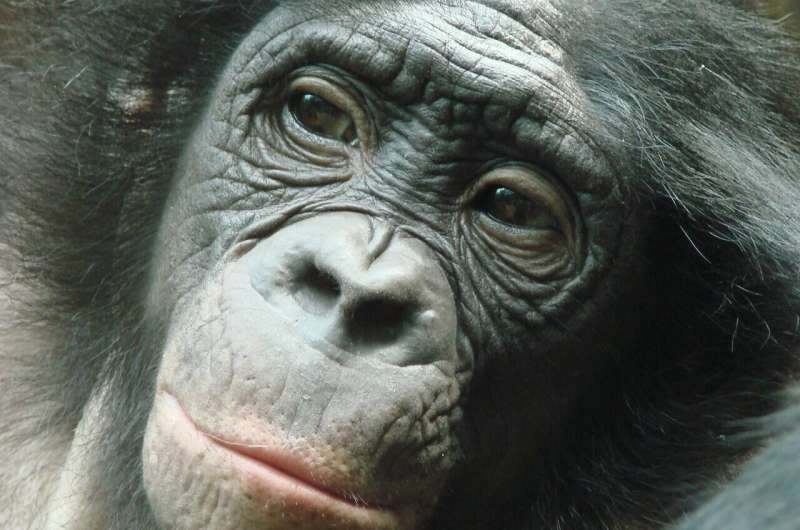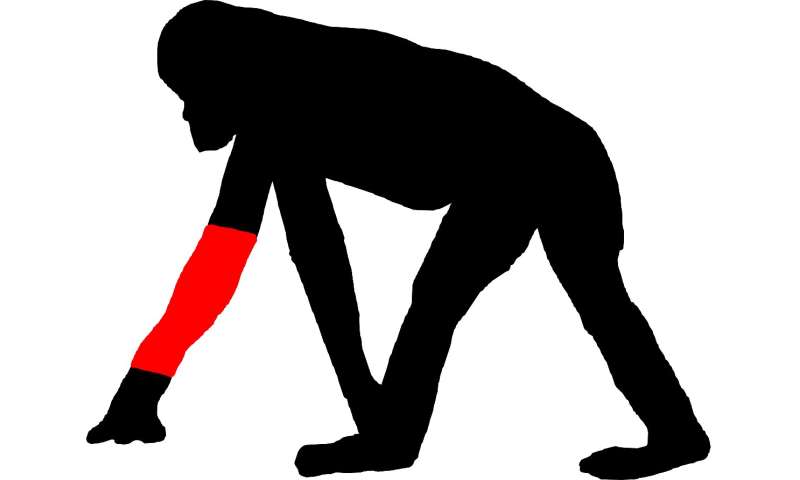This article has been reviewed according to Science X's editorial process and policies. Editors have highlighted the following attributes while ensuring the content's credibility:
fact-checked
peer-reviewed publication
trusted source
proofread
Bonobos found to grow similarly to humans

Until now, there has been a broad consensus that the human adolescent growth spurt in body length is evolutionarily unique and absent in other primates. However, such adolescent growth spurt occurs in many primate species in body weight, including humans. The study published in the journal eLife suspected and confirmed that the reason for this divergence could be methodological issues.
In their scientific work, the researchers used three approaches: They first outlined how scaling problems and incorrect comparisons between growth rates of body length (linear) and weight (volume) can lead to misleading interpretations, effectively comparing apples to oranges.
Subsequently, the research team applied a scale-corrected approach to an extensive dataset of 258 zoo-living bonobos. These data included weight and length growth, as well as several physiological markers related to growth and puberty.
"We found pronounced growth spurts in body weight and body length in both sexes. Weight and length growth curves corresponded with each other and with patterns of testosterone and IGFBP-3 levels that resemble adolescent hormone surges in humans," says first author Andreas Berghänel from the Konrad Lorenz Institute of Ethology (KLIVV) at the University of Veterinary Medicine about the results.
-

Bonobos' body growth was determined by measuring forearm lengths in a Plexiglas tube. Credit: Jeroen MG Stevens -

Silhouette of a bonobo. The area marked in red on the forearm was measured. Credit: Verena Behringer
Re-interpretation of studies provides different insights
In a third step, data published in other studies on non-human primates were reinterpreted. The results showed that adolescent growth spurt in weight and length occurs not only in bonobos, but very likely also in other monkeys.
"Our results underline the importance of taking scaling laws into account when interpreting growth curves in general," says Verena Behringer, scientist in the Endocrinology Laboratory at the German Primate Center and senior author of the publication. "Furthermore, our data show that pronounced, human-like adolescent growth spurts in body weight and body length exist not only in bonobos, but probably also in many other non-human primates."
The study was conducted in cooperation with researchers from Odisee University of Applied Sciences, Antwerp Zoo Centre for Research and Conservation, the Antwerp University, the Max Planck Institutes for Evolutionary Anthropology and for Animal Behaviour, and the Institute of Cognitive Science at the University of Osnabrück. In addition, 19 zoos provided their data and contributed significantly to the success of the study.
More information: Andreas Berghänel et al, Adolescent length growth spurts in bonobos and other primates: Mind the scale, eLife (2023). DOI: 10.7554/eLife.86635.1
Journal information: eLife
Provided by The German Primate Center




















